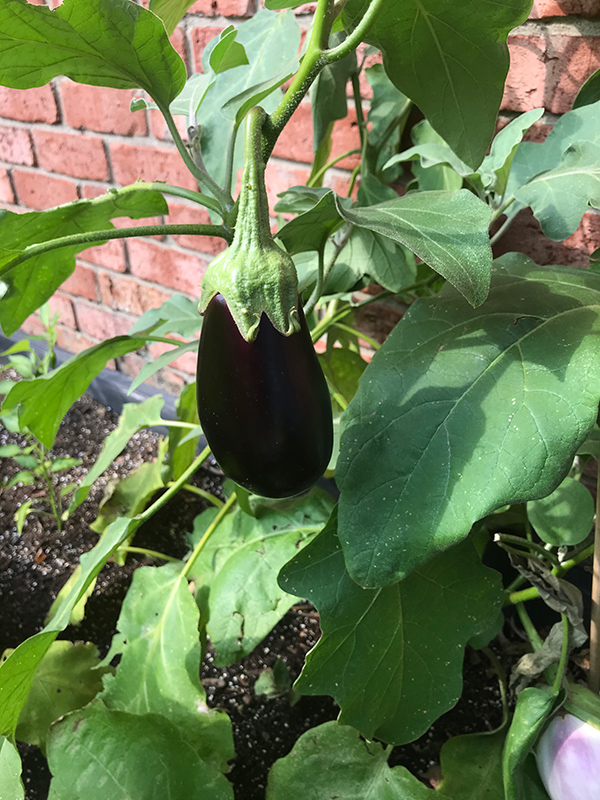Height: 4 feet
Spacing: 24 inches
Sunlight:
![]()
Hardiness Zone: (annual)
Description:
A tall and sturdy variety setting fruit under cool conditions, great for short season growing; vigorous and high yielding, producing 7-9" long, dark purple fruit with firm and tasty, creamy white interiors; excellent for grilling, frying or baking
Edible Qualities
Nadia Eggplant is an annual vegetable plant that is commonly grown for its edible qualities, although it does have ornamental merits as well. It produces small deep purple oval eggplants (which are technically 'berries') with creamy white flesh which are typically harvested when mature. The eggplants have a mild taste and a firm texture.
The eggplants are most often used in the following ways:
- Eating When Cooked/Prepared
- Cooking
- Baking
- Freezing
Planting & Growing
Nadia Eggplant will grow to be about 4 feet tall at maturity, with a spread of 24 inches. When planted in rows, individual plants should be spaced approximately 24 inches apart. This fast-growing vegetable plant is an annual, which means that it will grow for one season in your garden and then die after producing a crop.
This plant can be integrated into a landscape or flower garden by creative gardeners, but is usually grown in a designated vegetable garden. It should only be grown in full sunlight. It does best in average to evenly moist conditions, but will not tolerate standing water. It may require supplemental watering during periods of drought or extended heat. This plant is a heavy feeder that requires frequent fertilizing throughout the growing season to perform at its best. It is not particular as to soil pH, but grows best in rich soils. It is somewhat tolerant of urban pollution. This is a selected variety of a species not originally from North America.
Nadia Eggplant is a good choice for the vegetable garden, but it is also well-suited for use in outdoor pots and containers. With its upright habit of growth, it is best suited for use as a 'thriller' in the 'spiller-thriller-filler' container combination; plant it near the center of the pot, surrounded by smaller plants and those that spill over the edges. It is even sizeable enough that it can be grown alone in a suitable container. Note that when growing plants in outdoor containers and baskets, they may require more frequent waterings than they would in the yard or garden.

